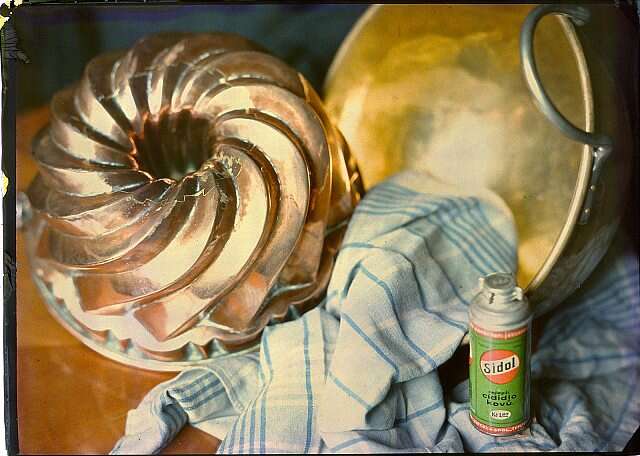Karel Šmirous
Krumlov native and pioneer of colour photography.
Childhood and inspiration photography
Karel Šmirous had been a black and white photographer since the age of twelve. After finishing primary school he wanted to continue his studies in painting, but at his father's request he began to study chemistry. During his studies at university he encountered autochrome, when he got his first impulse to pursue colour photography. In 1910, he became famous for the first Czech colour autochrome postcard published by the Minerva publishing house. His eldest brother Josef Seidl also took up photography and Karel learned a lot from him.
His mother, who herself studied painting with Amalia Mánesová, Josef Mánes' sister, out of a hobby, also worked her way up to artistic photography and composition. Karel later applied his studies in chemistry to the field of dyeing and colouring. He then pursued the same field and gained experience in Germany and France.
Why he was inspired by autochrome
In 1913, he met the Lumiere brothers, inventors of the autochrome, with whom he who were lifelong friends. A year later, Šmirous received his doctorate and became an assistant to Emil Votočka. Emil was one of the most important Czech chemists who specialized in organic chemistry, specifically monosaccharides. He was also known as a composer and music theorist. Karel experimented with colour printing, and after the war the Institute of National Economy for the Czech Academy sent him to the laboratories of the Lumiere brothers and to the United French dye works. In 1931 he solved the method of colour magnification under artificial light.
Becoming famous with colour photographs
After two years of research into the transfer of colour photography onto paper, Karl's research was crowned with success in the form of the invention of the hydrotypesetting process for photographic printing, which he patented in 1921.
In 1937, at the World Exhibition in Paris, he received a gold medal for his invention and photographs made by the hydrotypical process. Unfortunately, as a result of the war, this technique did not find its application as modern colour photographic papers came into use. Karel Šmirous is the author of three Czechoslovak patents in the field of colour photography. Karel was also a well-known photographer, mostly concentrating on still lifes, nudes, portraits and landscapes, but also reportages. He was also involved in scientific and advertising photography. He published colour postcards of excellent technical workmanship. He organized lectures with projections of autochromes, prepared exhibitions where he illuminated 18×24 cm autochromes in light boxes or with daylight. He also prepared a representative publication "Czechoslovakia" for the 1958 Brussels exhibitions.
Šmirous died in Prague at the blessed age of 90. The most extensive collection of autochromes in Bohemia survives from his work, which was presented for the first time after his death at a solo travelling exhibition of the National Technical Museum celebrating the 90th anniversary of the autochrome in 1997 and which has been exhibited several times abroad.











